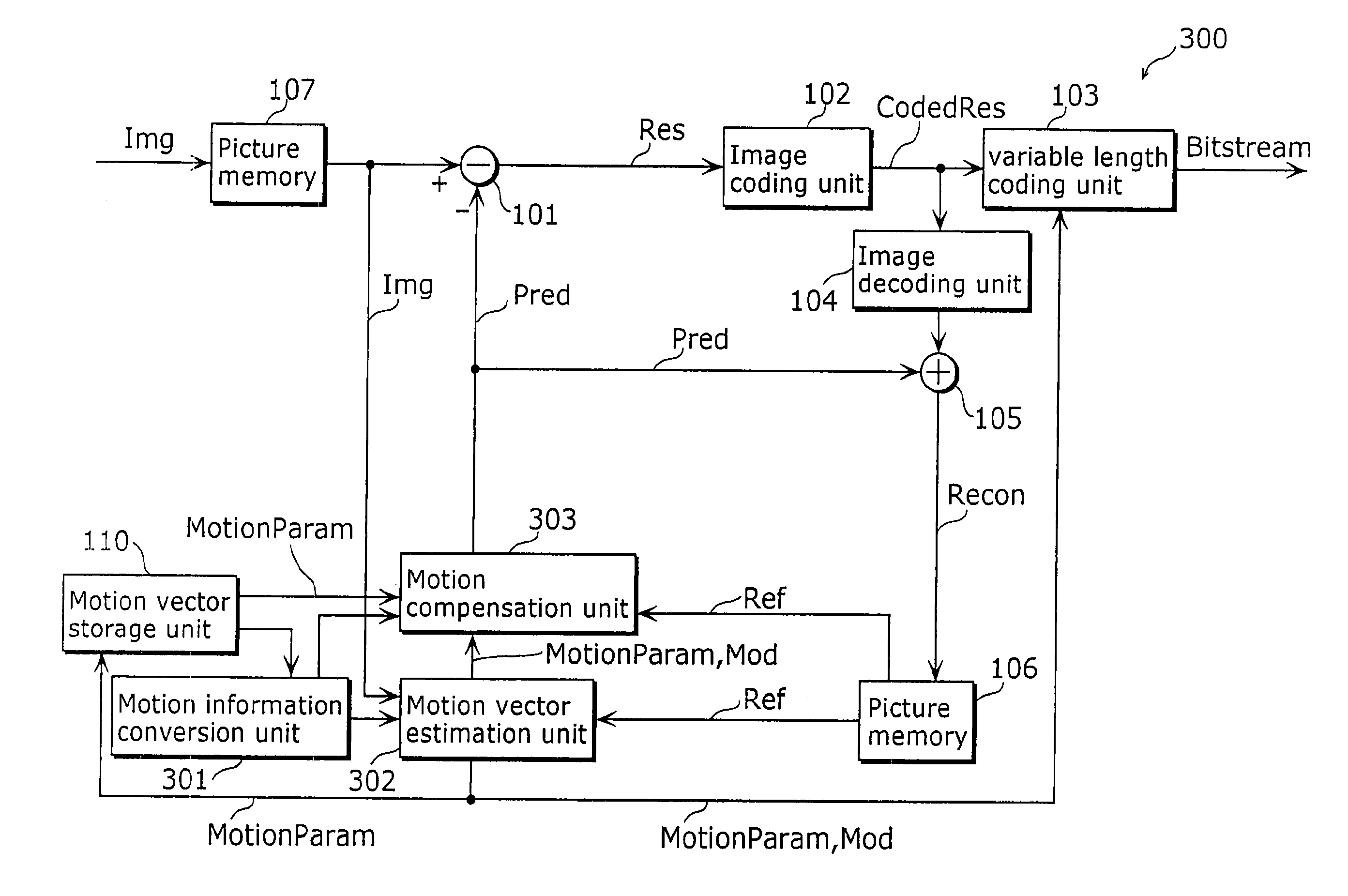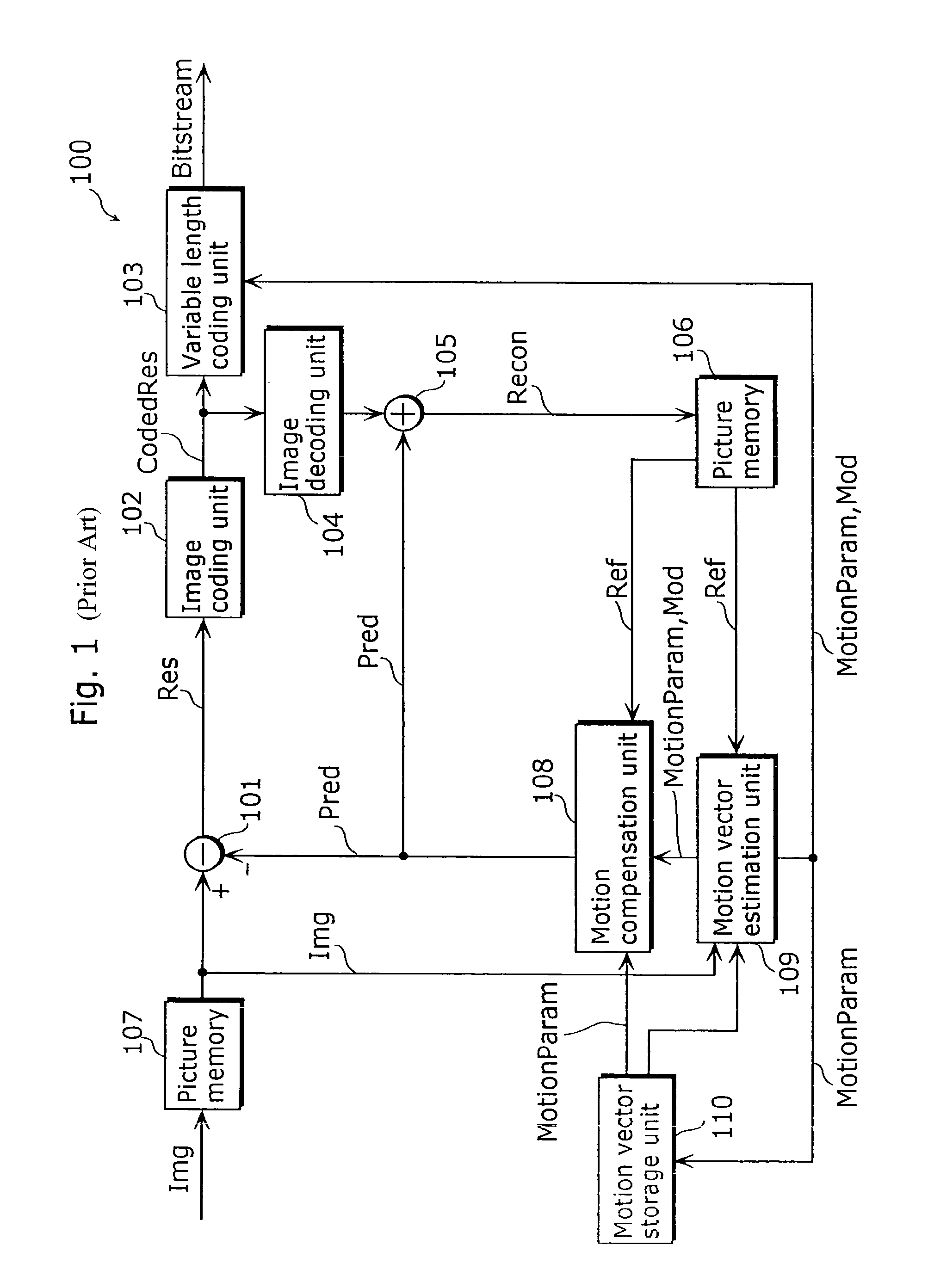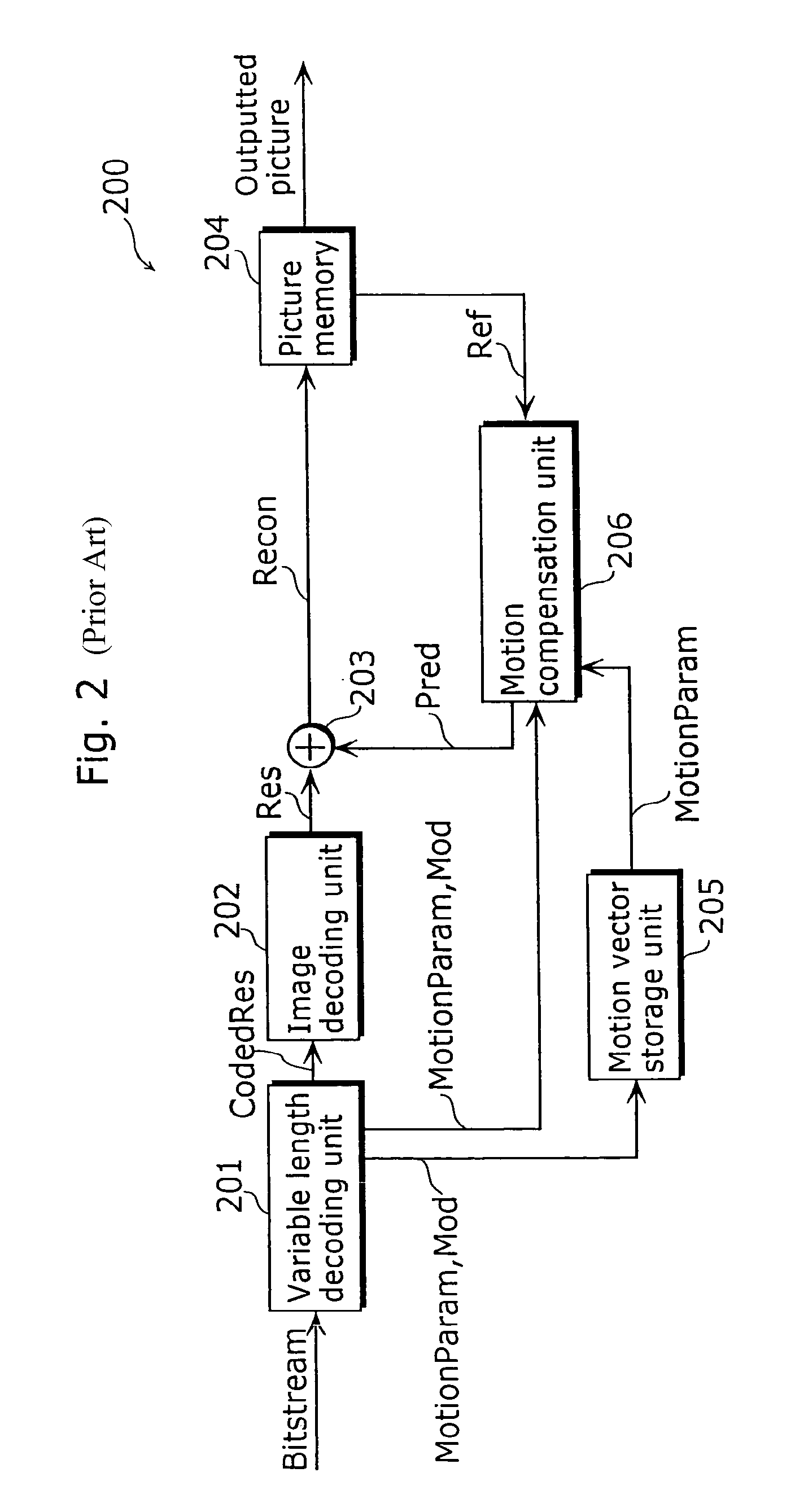Motion compensation method, picture coding method and picture decoding method
a technology of motion compensation and picture decoding, applied in the field of motion compensation method, picture coding method and picture decoding method, can solve the problems of large load of memory access (access for reading out), deterioration of effect, and reduction of processing amount, so as to reduce the access to reference memory
- Summary
- Abstract
- Description
- Claims
- Application Information
AI Technical Summary
Benefits of technology
Problems solved by technology
Method used
Image
Examples
first embodiment
The First Embodiment
[0043]The first embodiment of the present invention will be explained in detail below with reference to the figures.
[0044]FIG. 4 is a diagram showing the structure of a picture coding apparatus 300 according to one embodiment using a picture coding method according to the present invention. The picture coding apparatus 300 is a picture coding apparatus that performs motion compensation of a B picture (to be coded) in a larger block size than the block size of motion compensation of a P picture referring to two pictures. The picture coding apparatus 300 includes a difference unit 101, an image coding unit 102, a variable length coding unit 103, an image decoding unit 104, an addition unit 105, a picture memory 106, a picture memory 107, a motion vector storage unit 110, a motion information conversion unit 301, a motion vector estimation unit 302 and a motion compensation unit 303.
[0045]The picture memory 107 stores image data “Img” that represents moving pictures...
second embodiment
The Second Embodiment
[0084]In the Second Embodiment that is explained next, when the current macroblock to be coded or decoded and the macroblock in a subsequent picture which is co-located with the current macroblock are motion-compensated in different sizes, the judgment method for selecting either determining the motion vector of the current block to be motion-compensated to be (0, 0) or determining the motion vector of the current block to be motion-compensated using the motion vectors of the adjacent blocks, is different from the judgment method of the First Embodiment. When the current macroblock and the macroblock in a subsequent picture which is co-located with the current macroblock are motion-compensated in the same block size, motion compensation of a current block to be motion-compensated is performed using the methods explained in FIGS. 6A, 6B, 7 and 8 of the First Embodiment. Consequently, in respect to the structure, the principally different parts between the picture...
third embodiment
The Third Embodiment
[0096]Furthermore, it is possible to easily perform the processing shown in the above embodiments in an independent computing system by recording a program for realizing the picture coding method and the picture decoding method shown in the above-mentioned embodiments onto a storage medium such as a flexible disk.
[0097]FIG. 13 is an illustration of a recoding medium for storing a program for realizing the First and Second Embodiments by a computer system.
[0098]FIG. 13B shows a full appearance of a flexible disk, its structure at cross section and the flexible disk itself; whereas FIG. 13A shows an example of a physical format of the flexible disk as a main body of a storing medium. A flexible disk FD is contained in a case F, a plurality of tracks Tr are formed concentrically from the periphery to the inside on the surface of the disk, and each track is divided into 16 sectors Se in the angular direction. Therefore, as for the flexible disk storing the above-ment...
PUM
 Login to View More
Login to View More Abstract
Description
Claims
Application Information
 Login to View More
Login to View More - R&D
- Intellectual Property
- Life Sciences
- Materials
- Tech Scout
- Unparalleled Data Quality
- Higher Quality Content
- 60% Fewer Hallucinations
Browse by: Latest US Patents, China's latest patents, Technical Efficacy Thesaurus, Application Domain, Technology Topic, Popular Technical Reports.
© 2025 PatSnap. All rights reserved.Legal|Privacy policy|Modern Slavery Act Transparency Statement|Sitemap|About US| Contact US: help@patsnap.com



